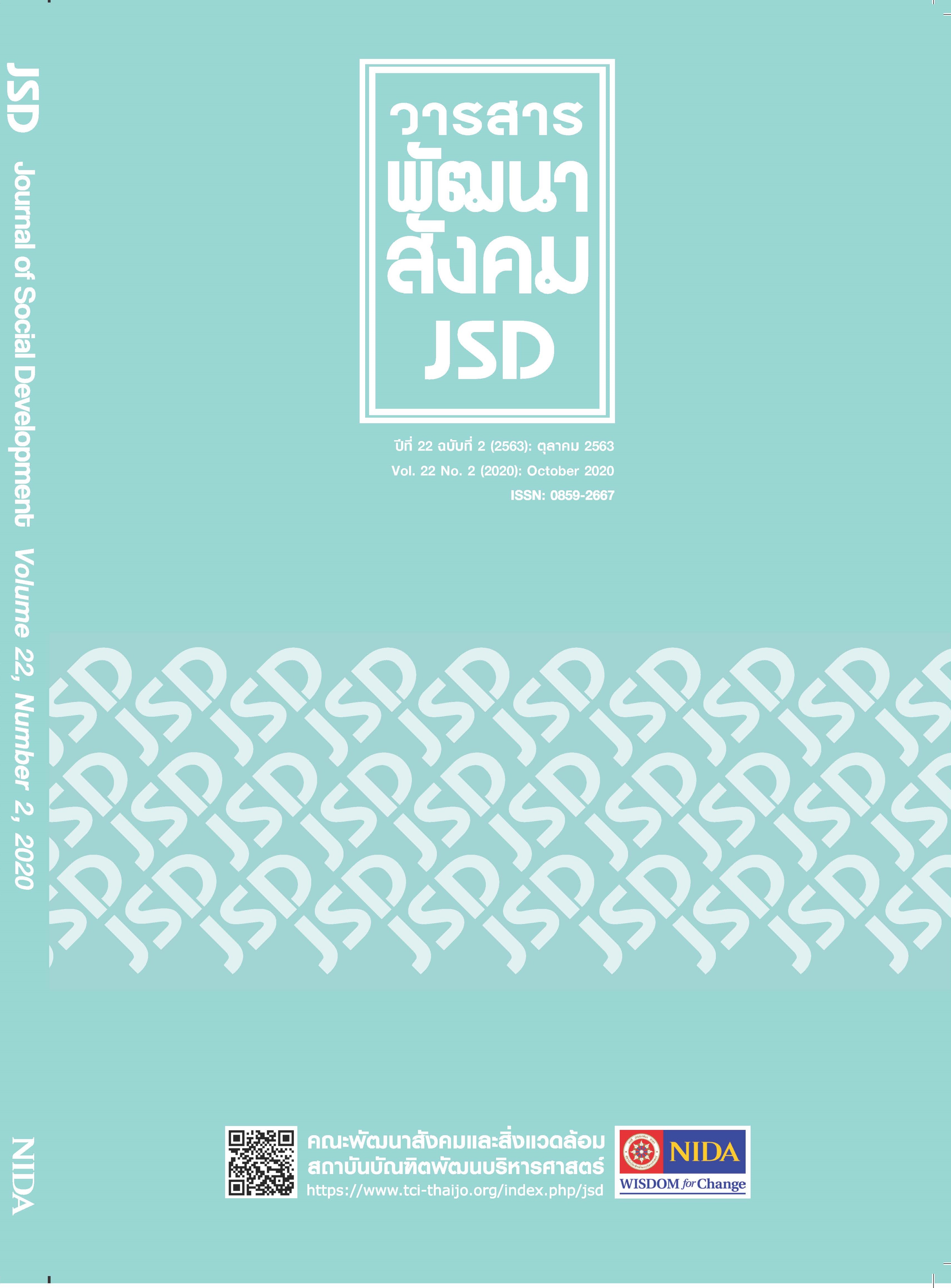The Selection Criteria of Suitable Locations for Waste Sub-transfer Station Establishment Using the Analytical Hierarchy Process (AHP)
Main Article Content
Abstract
Article Details
References
Abd-El Monsef, H. (2015). Optimization of municipal landfill siting in the Red Sea coastal desert using geographic information system, remote sensing and an analytical hierarchy process. Environmental earth sciences, 74(3), 2283-2296.
Agarwal, P., Sahai, M., Mishra, V., Bag, M., & Singh, V. (2014). Supplier selection in dynamic environment using analytic hierarchy process. International Journal of Information Engineering and Electronic Business, 6(4), 20.
Bernasconi, M., Choirat, C., & Seri, R. (2010). The analytic hierarchy process and the theory of measurement. Management Science, 56(4), pp. 699-711.
Chaudhary, S., Nidhi, C., & Rawal, N. R. (2019). GIS-Based Model for Optimal Collection and Transportation System for Solid Waste in Allahabad City. In Emerging Technologies in Data Mining and Information Security (pp. 45-65). Springer, Singapore.
Dehghani, M. H., Mosavi, M. F., Ale-Sheikh, A. A., Heidarinejad, Z., & Yousefi, M. (2018). Experimental data of designing an optimal system for storage, collection and transfer of household waste in the GIS environment: A case study of Tehran, district 22, Iran. Data in brief, 19, 1605-1613.
Department of Environment (2015). Phaen Borihan Chatkan Khaya Munfoi Khong Krungthepmahanakhon Phoso 2558-2562. [in Thai]. Retrieved November 11, 2019, from http://www.oic.go.th/FILEWEB/CABINFOCENTER9/DRAWER021/GENERAL/DATA0000/00000579.PDF
Dweiri, F., Kumar, S., Khan, S. A., & Jain, V. (2016). Designing an integrated AHP based decision support system for supplier selection in automotive industry. Expert Systems with Applications, 62, 273-283.
Eursiriwan N., Panichgarn V., Rangsan D., & Warichwattana U. (2017). The selection criteria of suitable locations for weigh station establishment using the Analytical Hierarchy Process (AHP). (In Thai). Kasem Bundit Engineering Journal, 7(1), 17-33.
Elhamdouni D., Arioua A., Elhmaidi A. et al. (2017). Geomatics tolos and AHP method use for a suitable comunal landfill site: Case study of Khenifra región – Morocco, Journal of Materials and Environmental Sciences, 8(10), 3612-3624.
EPA. (2002). Waste Transfer Stations: A Manual for Decision-Making. Retrieved from https://www.epa.gov/sites/production/files/2016-03/documents/r02002.pdf
Erdogan, S. A., Šaparauskas, J., & Turskis, Z. (2017). Decision making in construction management: AHP and expert choice approach. Procedia engineering, 172, 270-276.
Fei-Baffoe, B., Bosompem, C., & Stemn, E. (2016). Multi-criteria GIS-based siting of transfer station for municipal solid waste: The case of Kumasi Metropolitan Area, Ghana.
Güler, D., & Yomralıoğlu, T. (2017). Alternative suitable landfill site selection using analytic hierarchy process and geographic information systems: a case study in Istanbul. Environmental Earth Sciences, 76(20), 678.
Hanine, M., Boutkhoum, O., Tikniouine, A., & Agouti, T. (2017). An application of OLAP/GIS-Fuzzy AHP-TOPSIS methodology for decision making: Location selection for landfill of industrial wastes as a case study. KSCE Journal of Civil Engineering, 21(6), 2074-2084.
Huizingh, E., & Vrolijk, H. C. (1995). Decision support for information systems management: applying analytic hierarchy process. Groningen: SOM Research and Graduate School.
Islam, A., Ali, S. M., Afzaal, M., Iqbal, S., & Zaidi, S. N. F. (2018). Landfill sites selection through analytical hierarchy process for twin cities of Islamabad and Rawalpindi, Pakistan. Environmental earth sciences, 77(3), 72.
Kara, C., & Doratli, N. (2012). Application of GIS/AHP in siting sanitary landfill: a case study in Northern Cyprus. Waste Management & Research, 30(9), 966-980.
Kharat, M. G., Kamble, S. J., Raut, R. D., Kamble, S. S., & Dhume, S. M. (2016). Modeling landfill site selection using an integrated fuzzy MCDM approach. Modeling Earth Systems and Environment, 2(2), 53.
Khodaparast, M., Rajabi, A. M., & Edalat, A. (2018). Municipal solid waste landfill siting by using GIS and analytical hierarchy process (AHP): a case study in Qom city, Iran. Environmental earth sciences, 77(2), 52.
Krishna, V. S., Pandey, K., & Karnatak, H. (2017). Geospatial multicriteria approach for solid waste disposal site selection in Dehradun city, India. Curr. Sci, 112, 549-559.
Kunta K. & Nophaket N. (2018). Waste Management Using the Philosophy of Sufficiency Economy in Phra Samut Chedi District (In Thai), Samut Prakan Province, Journal of Community Development and Life Quality, 6(3), 497-524.
Nascimento, V. F., Sobral, A. C., Andrade, P. R., Ometto, J. P. H. B., & Yesiller, N. (2017). Modeling environmental susceptibility of municipal solid waste disposal sites: a case study in São Paulo State, Brazil. Journal of Geographic Information System, 9(01), 8.
National Human Rights Commission of Thailand. (2008). Phon Kan Truatsop Kan Lamoet Sitthimanutsayachon. [in Thai]. Retrieved from http://www.nhrc.or.th/getattachment/f6dc8a7f-1a67-430b-bae6-87dabace661e/.aspx
Pollution Control Department. (2018). Thailand Pollution Report 2018. Retrieved from http://www.pcd.go.th/file/Thailand%20Pollution%20Report%202018_Thai.pdf
______________. (2014). Lakken Lae Ekkasan Wichakan Thi Kiaokhong Kap Kan Chatkan Khaya Munfoi Lae Khongsia Antarai. [in Thai]. Retrieved November 11, 2019 from http://infofile.pcd.go.th/waste/topic15.pdf?CFID=19440059&CFTOKEN=14202960
Rahmat, Z. G., Niri, M. V., Alavi, N., Goudarzi, G., Babaei, A. A., Baboli, Z., & Hosseinzadeh, M. (2017). Landfill site selection using GIS and AHP: a case study: Behbahan, Iran. KSCE Journal of Civil Engineering, 21(1), 111-118.
Saaty, T. L. (1988). What is the analytic hierarchy process?. Mathematical models for decision support. G. mitra, pp. 109-121.
______________. (1986). Axiomatic foundation of the analytic hierarchy process. Management science, 32(7), pp. 841-855.
______________. (1977). A scaling method for priorities in hierarchical structures. Journal of mathematical psychology, 15(3), pp. 234-281.
Tansirimongkol, W. (2014). AHP Advanced decision for organization progress and public well-being. (In Thai). Bangkok: Amarin Printing & Publishing Public Co., Ltd.


